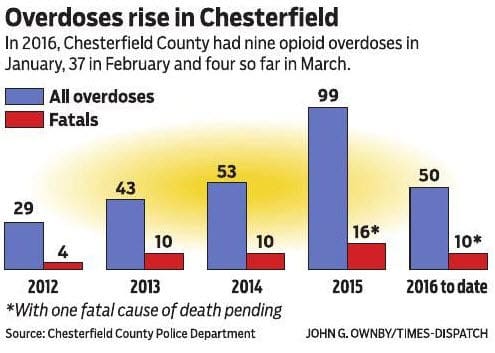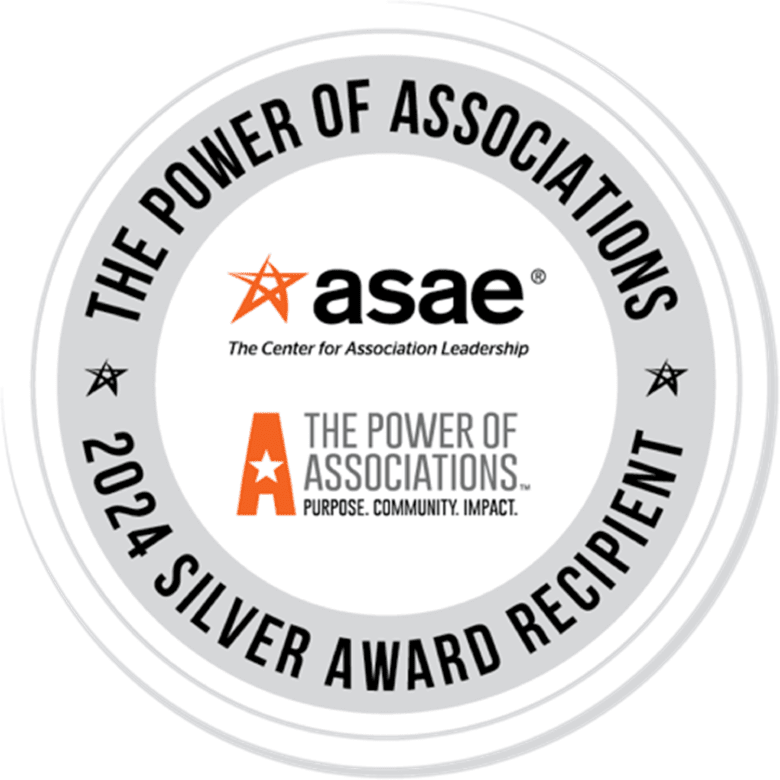
As we have been doing for the past two editions of Coalitions Online, we are featuring recent winners of the annual Dose of Prevention Award during October’s National Medicine Abuse Awareness Month (NMAAM). This week we are highlighting the outstanding work of the Substance Abuse Free Environment, Inc. (SAFE) in Chesterfield, Virginia, winner of the 2014 Dose of Prevention Award.
Unfortunately, as in far too many places across the United States, the opioid and heroin epidemic has significantly impacted this rural, suburban community of 330,000 people, just south of Richmond.
“We are proud of our strong partnership with Chesterfield County Police as we co-sponsor six successful drug take backs annually, collecting over 14,000 pounds of medications since 2010,” says Regina Whitsett, Executive Director of SAFE. “But the heroin and opioid crisis has demanded a large percentage of our time and concern since 2015.”
Heroin and opioid use have been on the rise in Chesterfield County since 2012. There were 29 overdoses and four fatalities that year. By 2015, those numbers had quadrupled with 99 overdoses and 16 fatalities. In the first three months of 2016, there were 50 overdoses and 10 fatalities, the same number of people for the entire year in 2014.
This escalating crisis caused Colonel Thierry G. Dupuis, Chief of the Chesterfield County Police, a member of SAFE’s board, to reach out to the coalition, asking them to coordinate and facilitate prevention and intervention efforts in the county. SAFE immediately jumped on board, bringing together key stakeholders from law enforcement, EMS, firefighters, the medical, treatment and recovery communities, and the education and prevention sectors. They created the Central Virginia Opioid and Heroin Prevention Task Force, which meets monthly and modeled after a state level task force. Recently, Secretary of Public Safety and Homeland Security, Brian Moran visited the Task Force, commending them on bringing so many vital members of the community together to tackle this growing menace.
The Task Force went into full gear and together with SAFE, sponsored a training workshop this past April about the use of alternative treatments versus incarceration to help those addicted to opioids and heroin. It was attended by 235 people from across Virginia, including representatives from law enforcement, treatment providers, people in recovery, medical personnel, corrections staff, and education and prevention specialists. The Task Force has made it a goal to help individuals get into treatment as expeditiously as possible.
“Incarcerating addicts will not heal them of their addiction. They need rapid access to treatment and recovery to heal from this disease and live healthy and productive lives in the community,” said Whitsett.
In September 2016 there was another successful educational event for healthcare providers about the use of naloxone and opioid addiction. It was attended by 105 doctors, pharmacists, and nurses.
Subsequent to the creation of the Task Force, the coalition received a SAMHSA Partnership for Success (PFS) grant (via the State Department of Behavioral Health, and County Community Services Board Mental Health Prevention Services) to gather data about opioid and heroin use in the county. They are just completing the final needs assessment report.
Also, in partnership with the Chesterfield County Police Department, SAFE created an opioid and heroin treatment resource card. Over 5,000 of these cards have been distributed at sites frequented by users, such as motels, convenience stores, community centers, and police stations. The card lists names and phone numbers of treatment centers in the area. The hope is that those with an opioid or heroin use disorder will seek the treatment and recovery they so desperately need.
The road to success is long and winding, any yet SAFE and its partners are moving ahead steadfastly and are convinced that they, not this epidemic, are going to win the war.


